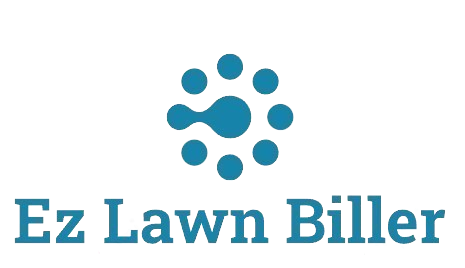The Ultimate Guide to Set Pricing for Lawn Services
Setting the right pricing for lawn services is crucial for any landscaping business aiming to thrive in a competitive market. This comprehensive guide will explore various strategies, considerations, and practical tips on how to establish pricing that reflects the value of your services while also attracting and retaining clients. From analyzing operational costs to understanding market rates, we will cover all the essentials to help you set competitive yet profitable prices for your lawn care services.
In the world of lawn care, pricing is more than just numbers; it represents your business’s value and can significantly impact your profitability and growth. Many lawn care professionals struggle with finding the optimal pricing strategy, often underpricing their services or failing to communicate their value effectively. This guide will delve into the nuances of setting prices, ensuring you strike the right balance between affordability and profitability.
We will discuss various factors that influence pricing, including service types, geographic location, operational costs, and the competitive landscape. Additionally, we will explore how tools like lawn billing software can streamline your pricing strategy, making it easier to manage and adjust your rates as necessary. Whether you are a seasoned lawn care professional or just starting, this guide will equip you with the knowledge to set effective pricing for your services.
Understanding Your Costs
The first step in establishing your pricing strategy is to have a clear understanding of your costs. This encompasses both direct and indirect costs associated with running your lawn care business. Direct costs include materials, labor, equipment, and vehicle expenses, while indirect costs cover overhead expenses like marketing, insurance, and administrative costs.
To accurately calculate your costs, it’s essential to track these expenses meticulously. Use accounting software or spreadsheets to keep a detailed record. Once you have a clear picture of your costs, you can determine your minimum price point—essentially, the lowest price you can charge while still covering your expenses. Remember, pricing below your costs can lead to losses and hurt your business’s sustainability.
For example, if your direct costs for a lawn mowing job amount to $30 and your indirect costs average out to $20 per job, your minimum price should be at least $50. However, aiming for a price above your minimum will allow you to cover unforeseen expenses and generate profit.
Researching Market Rates
After understanding your costs, the next step is to research market rates in your area. Pricing can vary significantly based on geographic location, competition, and service demand. In a competitive market, you may need to offer more attractive rates to attract customers. However, in areas with less competition, you might have the flexibility to charge more.
Conducting a competitive analysis involves checking the prices of local lawn care companies and understanding the services they provide. This will help you position your pricing within the market context. You can also utilize online platforms and community forums to gauge customer perceptions of fair pricing in your area.
Additionally, consider the specific services you offer and how they compare to competitors. For example, if you provide premium services like organic fertilization or specialized pest control, you can justify higher prices due to the added value. Understanding the competitive landscape is crucial for positioning your pricing effectively.
Setting Your Pricing Structure
Once you’ve gathered information on your costs and market rates, it’s time to decide on a pricing structure. There are several common pricing models to consider for lawn services:
- Hourly Rate: Charging by the hour provides flexibility to adjust prices based on job complexity. This model is suitable for services that vary in length.
- Flat Rate: Offering a fixed price for specific services (e.g., lawn mowing or landscaping) can simplify customer decision-making and make your pricing more transparent.
- Package Deals: Bundling services together into packages can encourage customers to purchase more services while providing a perceived discount.
- Subscription-Based Pricing: Implementing a recurring billing model for ongoing services (e.g., weekly mowing) can create predictable revenue streams.
It’s essential to choose a pricing structure that aligns with your business model and customer expectations. For instance, if you often perform larger jobs, a flat rate or package deal may be more appealing to clients than hourly billing, which can lead to uncertainty in total costs. On the other hand, for more intricate tasks that vary in scope, hourly rates might be more appropriate.
Incorporating Value into Your Pricing
Pricing should not solely reflect costs; it should also communicate the value of your services. Customers are often willing to pay more for perceived value, which can include exceptional service quality, reliable scheduling, and specialized expertise. To effectively convey value, consider the following strategies:
- Communicate Benefits: Highlight the benefits of your services, such as promoting healthy lawn growth or improving curb appeal. Use testimonials or case studies to illustrate positive outcomes.
- Enhance Customer Experience: Providing excellent customer service, timely communication, and follow-up checks can enhance the overall experience, justifying higher prices.
- Leverage Digital Tools: Utilize tools like lawn service software to streamline your operations and enhance professionalism. A well-managed business reflects positively on pricing.
By effectively communicating the value of your services, you can differentiate your business from competitors and justify your pricing strategy. Customers who perceive quality and reliability are more likely to invest in premium services.
Adjusting Your Pricing Strategy
Your pricing strategy should not be static; it needs to adapt to changing market conditions, customer preferences, and business growth. Regularly reviewing and adjusting your prices can help ensure that they remain competitive and profitable.
Consider factors like seasonal fluctuations, economic changes, and shifts in customer demand. For instance, during peak lawn care seasons, you may be able to increase your rates due to higher demand. Conversely, during slower months, offering promotions or discounts can help maintain cash flow.
Gathering client feedback can also provide insights into pricing perceptions. Conduct surveys or engage clients in discussions about their willingness to pay for different services. This information can guide adjustments and help you tailor your offerings to meet customer expectations.
The Role of Technology in Pricing
In today’s digital age, leveraging technology can play a significant role in setting and managing your pricing strategy. Tools like lawn company apps and billing software can streamline your pricing processes, making it easier to manage multiple services and clients.
With technology, you can automate many aspects of billing, ensuring that invoices reflect accurate pricing while saving you time spent on manual calculations. Moreover, software can provide insights into service trends and customer behavior, enabling you to adjust prices based on data-driven decisions.
Additionally, cloud-based solutions allow you to access pricing information and client data from anywhere, making it easier to make quick adjustments in response to changing market conditions. Incorporating technology into your pricing strategy not only enhances efficiency but also improves client satisfaction through timely and accurate billing.
Conclusion
Setting the right pricing for lawn services is a multifaceted process that requires careful consideration of costs, market conditions, and perceived value. By conducting thorough research, understanding your costs, and effectively communicating value, you can establish a pricing strategy that supports your business objectives.
Regularly reviewing and adjusting your pricing in response to market dynamics will help you stay competitive and profitable. Additionally, leveraging technology such as lawn service software can simplify your billing processes and enhance your overall business efficiency.
Ultimately, striking the right balance in pricing not only attracts customers but also supports long-term business growth. Start implementing these strategies today and transform your pricing approach into a powerful tool for success.




